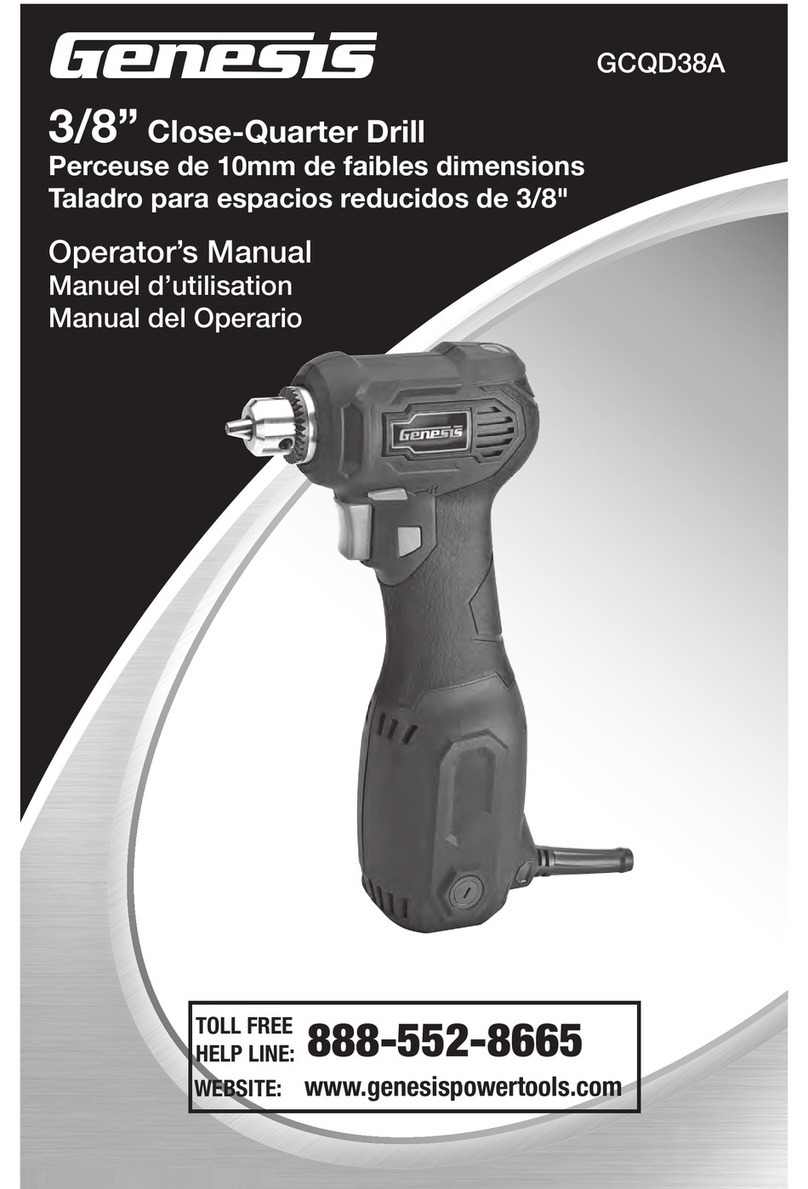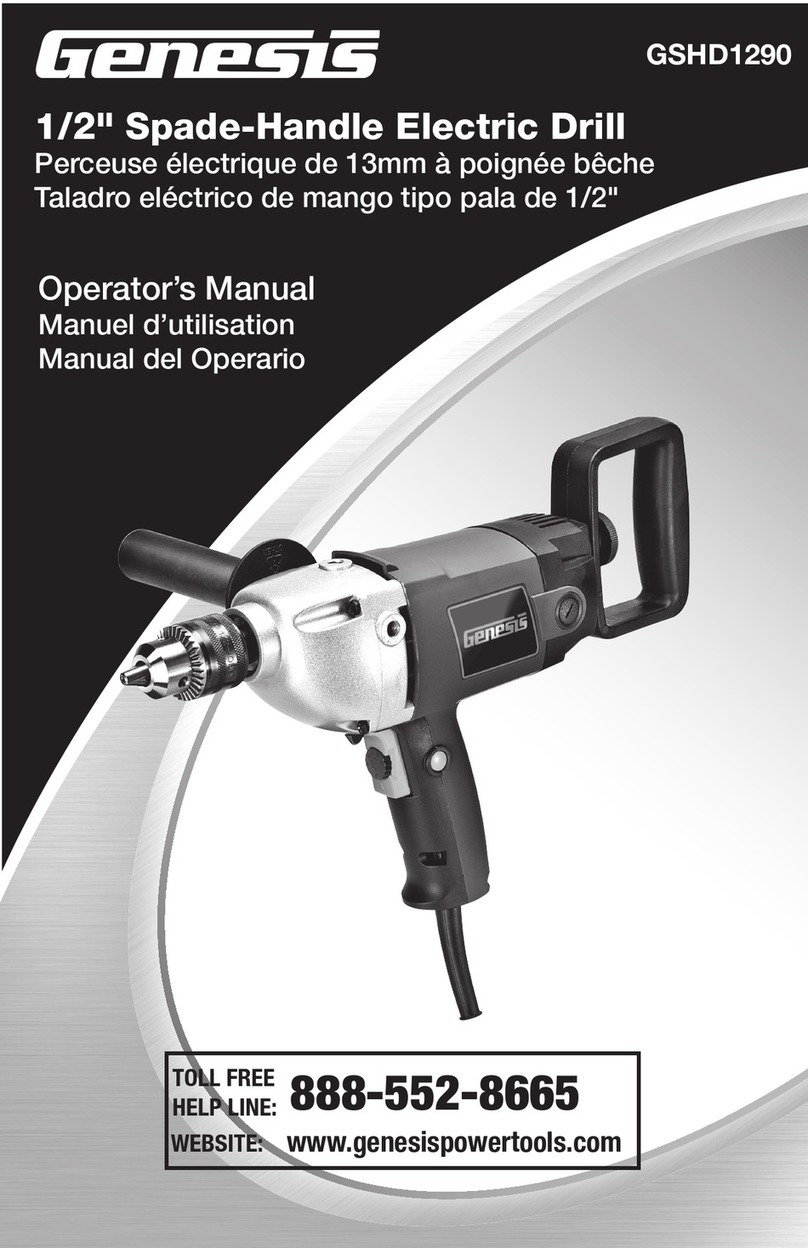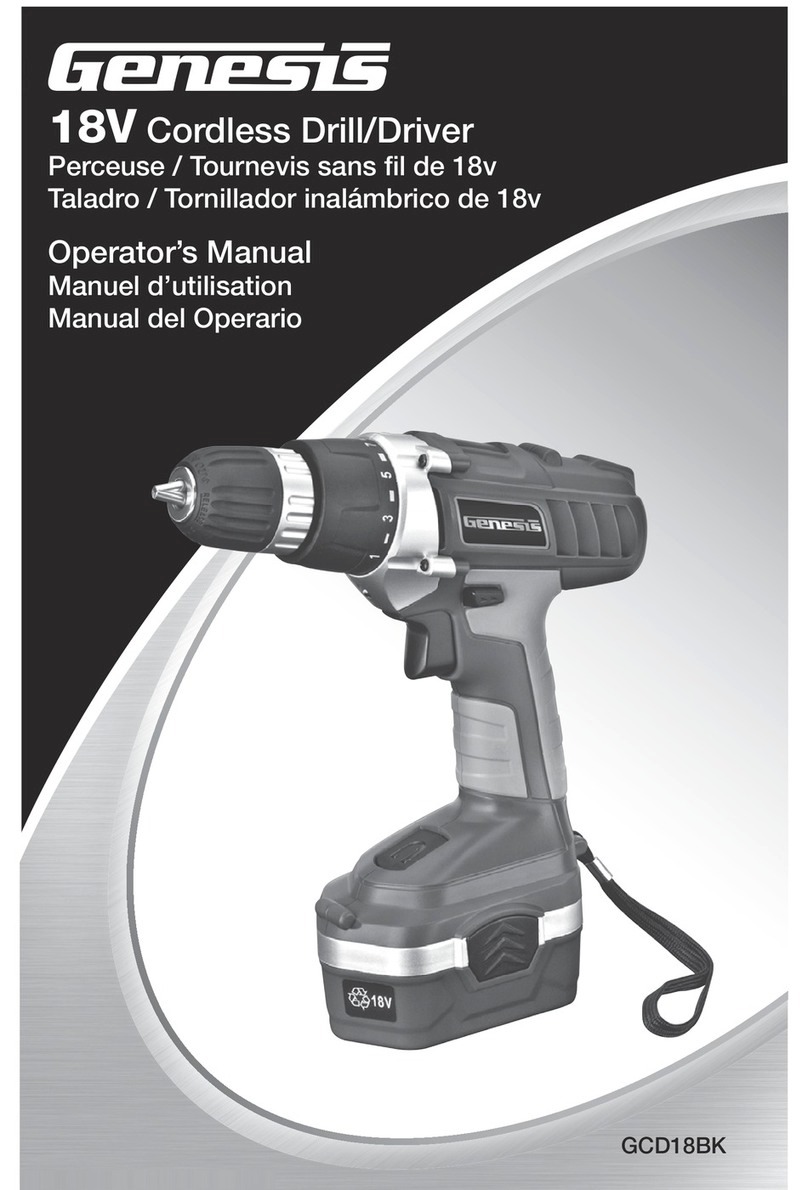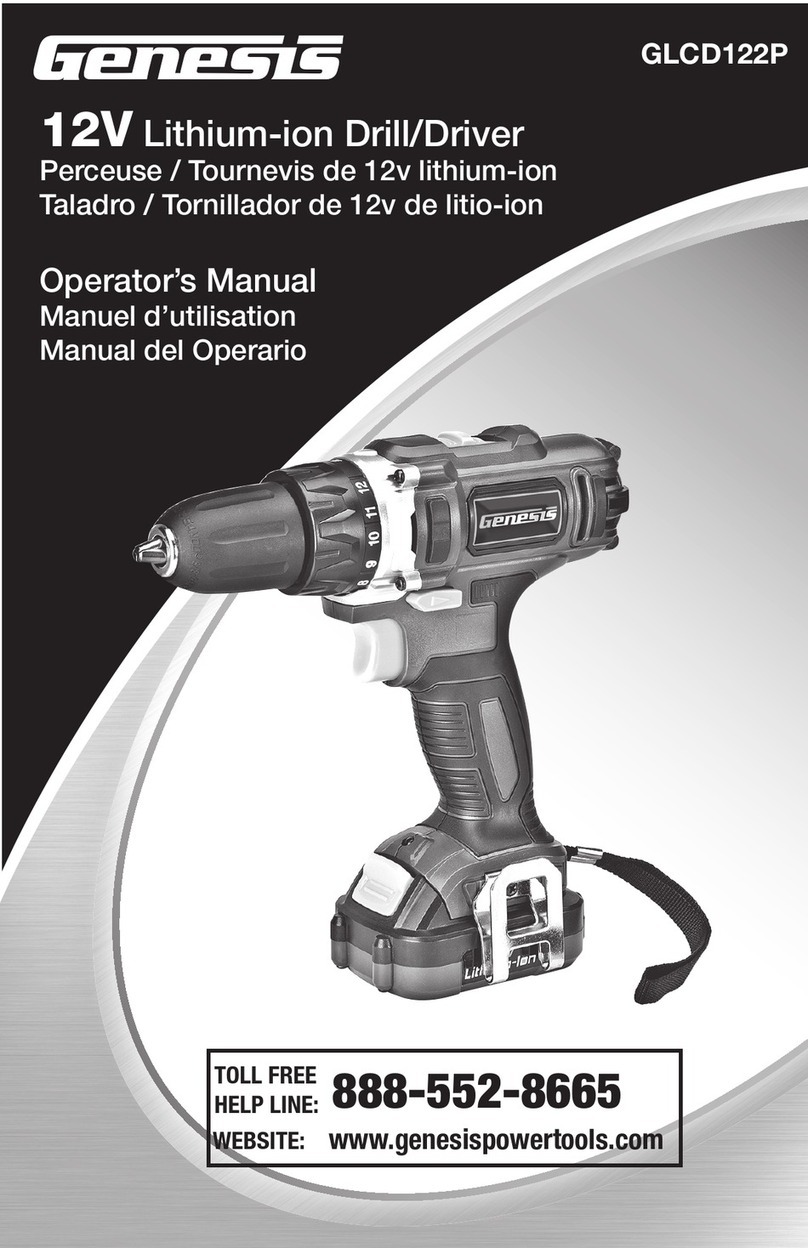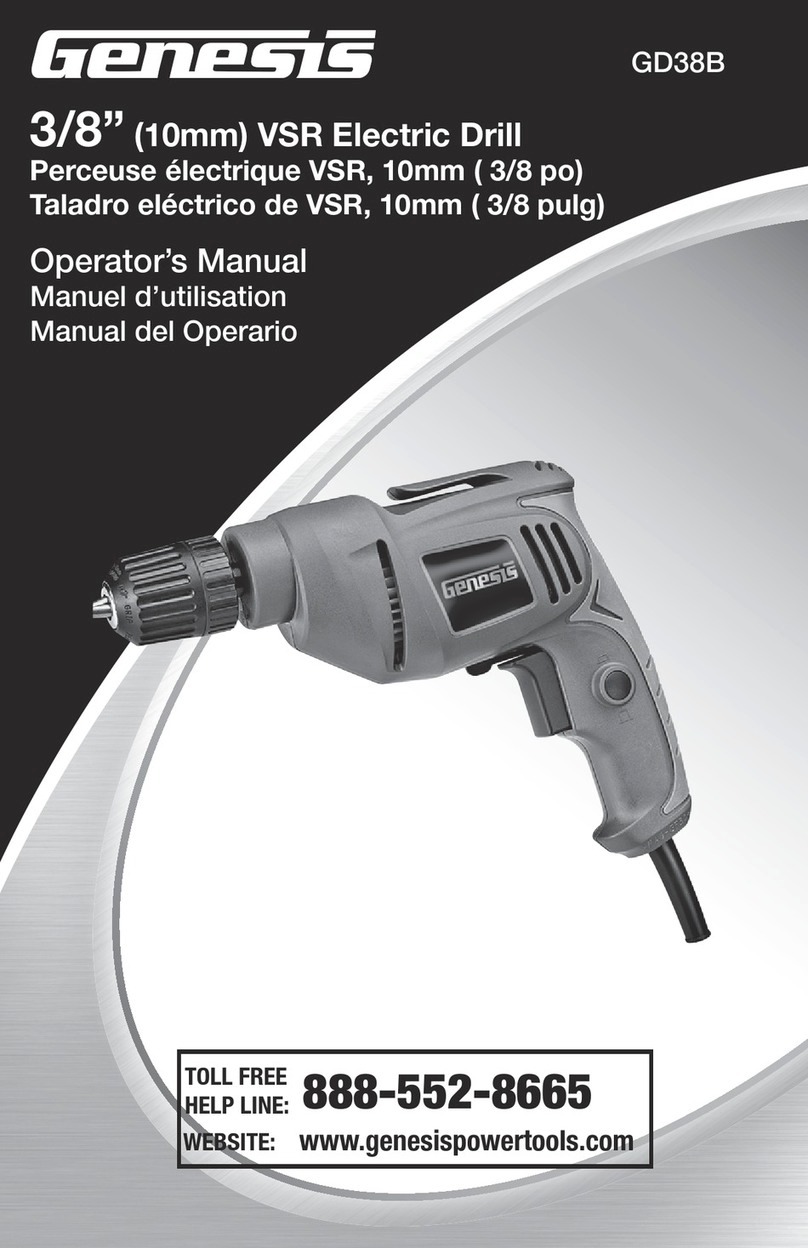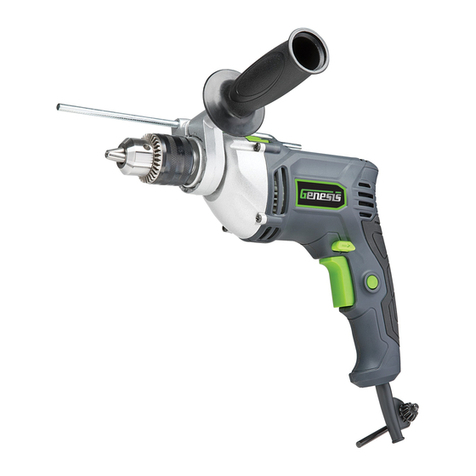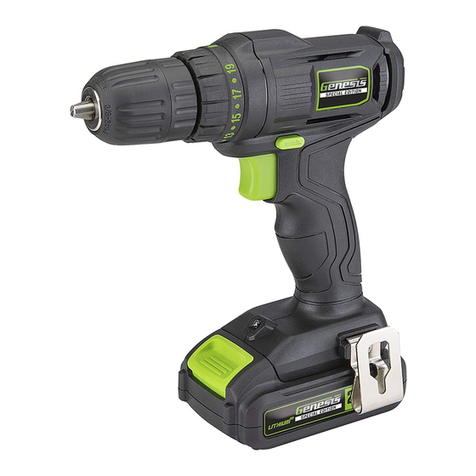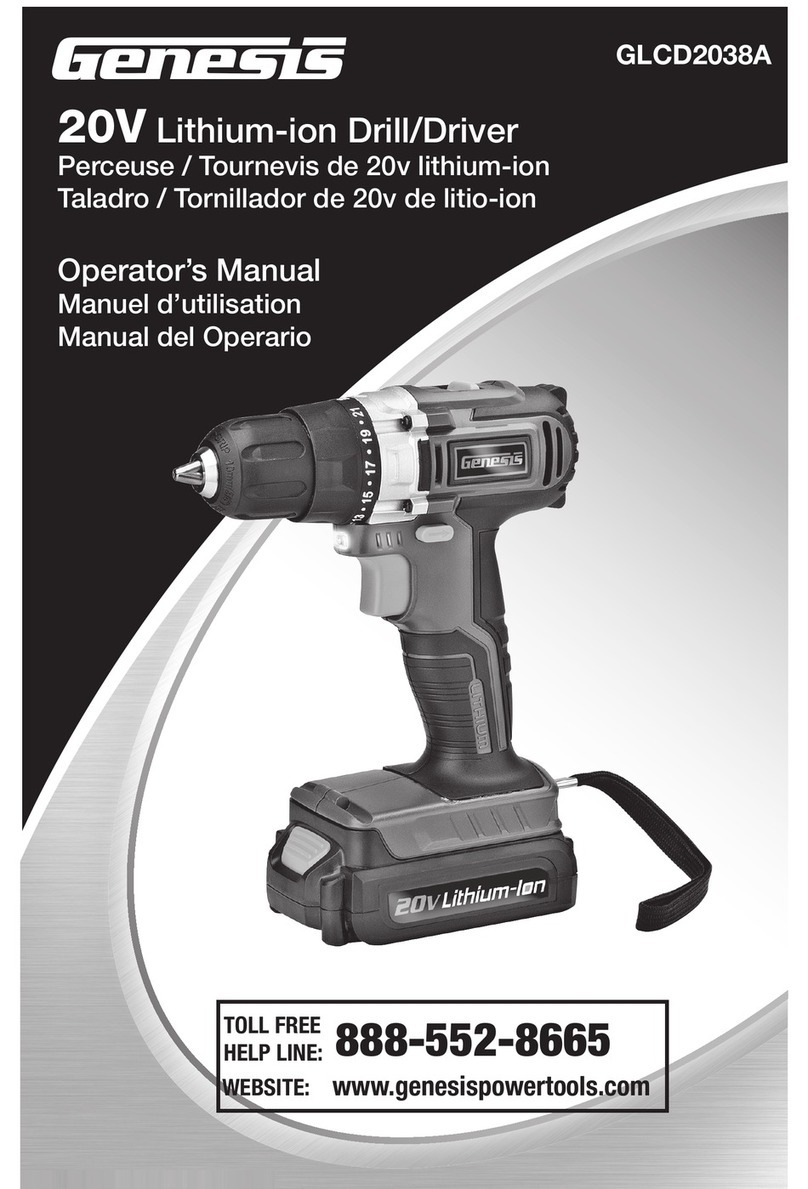
English
1/2" Hammer Drill
Operator’s Manual GHD1260B
WARNING: Always maintain a firm grip on both the auxiliary handle and switch
handle during drilling and hammer drilling operations. Failure to be prepared may result
in loss of tool control and possible serious injury.
DRILLING IN CONCRETE AND MASONRY PRODUCTS
• Unplug the drill from the power source.
• Install the desired size drill bit and tighten the chuck.
(Important Note: Be sure to use percussion type carbide tipped drill bit.)
• Select the “hammer drill” mode.
• Move the forward/reverse lever to the forward position.
• Set the depth gauge if needed and position the auxiliary handle. Tighten the auxiliary handle.
• Secure the workpiece in a vise, with clamps or other means if necessary to keep the workpiece from spinning
as the drill bit rotates.
• Mark the location(s) on workpiece where the holes are to be drilled.
• Be sure you are wearing appropriate eye protection, hearing protection, and respiratory protection. You may
want to wear gloves with padded palms to minimize vibration to hands and arms.
• Before plugging the hammer drill into a power source, make sure the "Lock-ON" button is not engaged and
the switch trigger operates properly.
• Plug the hammer drill into a power source.
• Position the drill bit at the desired location for the hole.
• Hold the drill firmly, apply moderate downward pressure and slowly pull the switch trigger.
• Keep the tool in position, preventing the drill bit from wandering. (If the hammer drill bounces or “dances” on
the workpiece, increase the downward pressure on the drill.)
• Increase the drill speed as the hole becomes established, maintaining steady and firm downward pressure.
(Do not force the tool or apply side pressure, which may cause the hole to become elongated.)
• To prevent the hole from clogging with dust or chips that bind the drill bit, occasionally pull the bit partially out of
the hole while the tool is running to help clear accumulated debris from the bit flutes. Do not use water to settle
the dust since it will clog the bit flutes causing the bit to bind in the hole
.
• If the bit strikes reinforcing bar, stop the tool and remove the bit from the hole. Do not attempt drilling through
the reinforcing bar.
• When hole is drilled to the desired depth, withdraw the bit from the hole, and turn the drill off by releasing the
switch trigger.
• After drilling is completed, you may find the hole partially filled with dust. Use a “blow-out bulb” or
compressed air to clean the dust from the hole. (Note: Use a mask or respirator to prevent inhalation of the
dust created by drilling or clearing holes in concrete or similar materials.)
DRILLING IN WOOD, COMPOSITE MATERIALS AND PLASTICS
Although most “twist” drill bits are designed for drilling into metal, they are the most common bit used for boring
holes in wood, wood composites and plastics. There are many types of drill bits available that may be more
appropriate or designed specifically for boring the type of hole you desire. Additional drill bits to choose from
include: spade bits, brad bits, self-feed bits, hole saws, circle cutters, multi-spur bits and fastener bits, to name
just a few! Woodworking publications and tool supply store personnel are good sources to help you select the drill
bit that best satisfies your needs.
• With the tool unplugged, install the appropriate bit into the chuck and tighten the chuck.
• Place the forward/reverse switch in the forward position.
• Mark the location(s) on work piece where the holes are to be drilled.
• Secure the workpiece with clamps or other means.
• Wear safety goggles or safety glasses with side shields. Wear a dust mask or respirator to prevent inhalation of
wood dust.
To Drill the Hole
• Plug the tool into the power source.
• Place tip of the drill bit on the workpiece where the hole is being drilled.
• Apply downward pressure and slowly depress the switch trigger.
• When using a twist drill, withdraw the bit from the hole frequently to clear built up wood chips from the flutes.
Clearing the flutes avoids overheating the bit and burning the wood.
• When drilling plastics use slower speeds to avoid melting the material.
